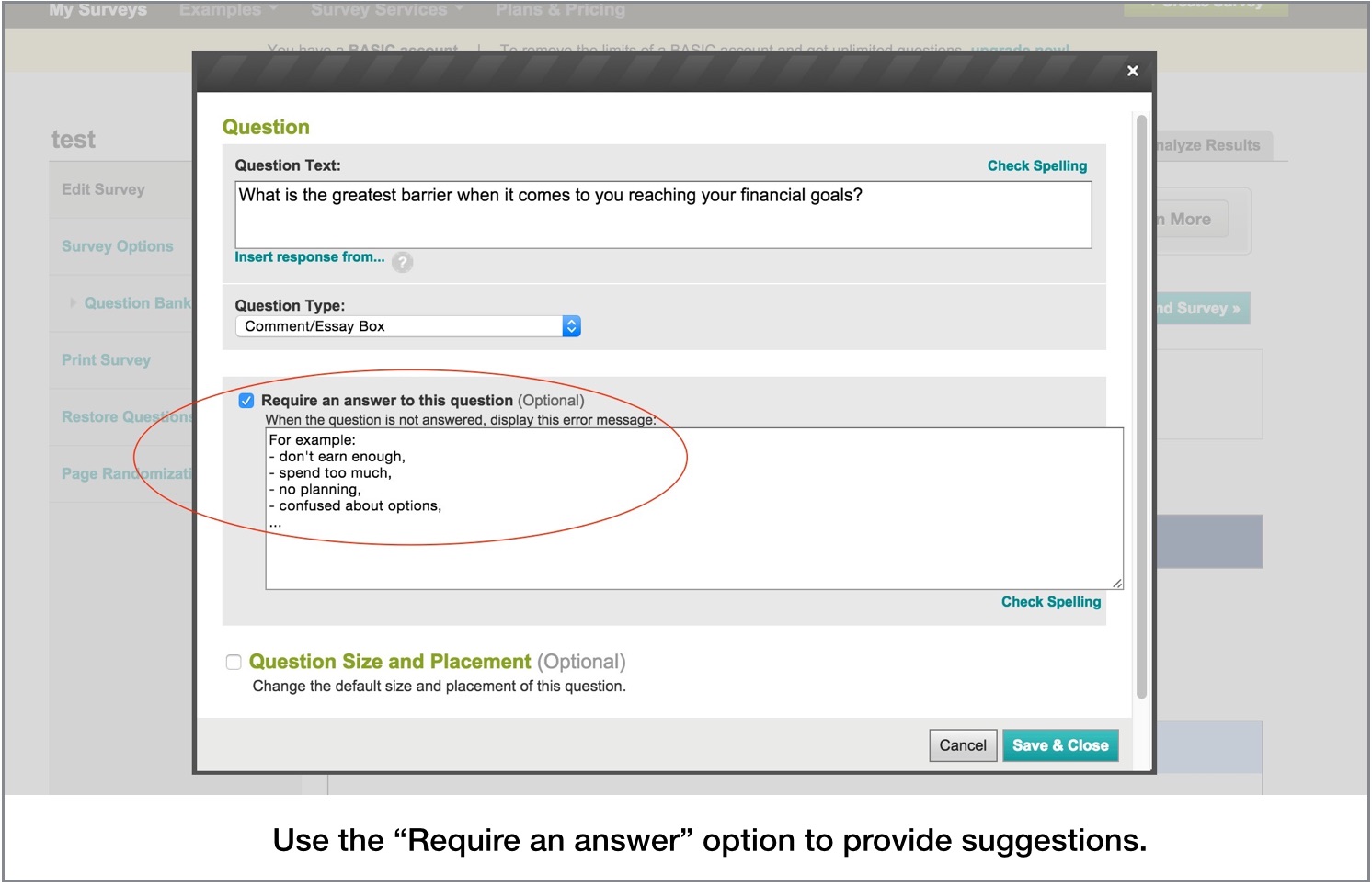How to do market research without annoying the heck out of your customers
We’ve all seen them - the deathly long surveys. They start innocently with a polite, somewhat pleading invitation. Then we are sucked into a dreary, mouse-clicking, worm hole of questions that dibble on ad nauseam. Why not be honest: “It will only take you all afternoon - you’ll be bored silly, but we really appreciate it!”There is a better way. I call it the magic two-question survey.Just to be clear. I’m not talking about surveys about my night in your hotel (next time, two chocolates, thank you). I’m talking about learning your customers’ future needs.Premise number one: assuming you know what people want is dumb. It’s like your waitress plopping a plate of steaming meatloaf in front of you because, well, you look like a meatloaf person.
“It’s like your waitress plopping a plate of steaming meatloaf in front of you because, well, you look like a meatloaf person.”
Knowing what your customers want is gold. And even with a small list you can learn buckets about the pain, fears, and aspirations of people following you.I ran a survey about productivity and success (thank you if you pitched in) last year that led to a sharp right-hand turn in my business. From those results (almost 500 people), I learned about procrastination, uncertainty, frustration, even the impact of work overwhelm on marriages. I could write a book just from those results.Here are the two questions I asked:
- What's your biggest obstacle for getting results at work or in life?
- When you think about creating the life of your dreams, what are your biggest obstacles?
My keynote presentation, Think, Plan, Act is completely based on those results. Thank you survey!
THE TWO-QUESTION SURVEY
The idea is to get business direction from your customers and followers, but without annoying them with a long survey. You also should want to know the language they use to describe their pain and desires. That’s the language you want to use in your marketing copy.The first question in the two-question survey discovers their pain, the second their desires. Note, in my survey I asked two questions about “pain” because I wanted to learn about both productivity challenges ("getting results"), as well as aspirations about life. You can go either way, but here I’ll describe a pain/solution set of questions.It’s no different than a conversation with a friend seeking your advice. First you learn all about what’s not working in their work/life/relationship/health, then you probe for solutions.
QUESTION #1
Here are sample first questions:
- What is the greatest barrier when it comes to you reaching your financial goals?
- What is your greatest frustration about your health?
- As a leader, what is your greatest frustration?
- When you think about your business, what is your greatest frustration?
When I do this, I don’t give suggestions unless they’re stumped. If you use a free tool like Survey Monkey (free up to 100 responses) you can use the “Require an answer to this question” box to give suggestions. If the respondent tries to skip the question, the suggestions pop-up.
“Shorter surveys get more responses, albeit less robust. Longer surveys get more detail, but fewer responses.”
Great, now we have a mini-essay about their problems. Would it be better if I asked five questions that rate their problem from one to five, or broke it down into sub-problems. Of course! But, here’s the trade-off. Shorter surveys get more responses, albeit less robust. Longer surveys get more detail, but fewer responses. Choose your medicine.
QUESTION #2
Here are sample second questions:
- Thinking about your financial future, what would be one or two solutions that get you on track with your goals?
- If you were to change just one or two things to improve your health and/or fitness, what exactly would it be?
- To be more effective as a leader, what are one or two things you need to either start doing or stop doing?
- As a business owner, what are one or two things you need to do differently every day to be more successful?
If you’ve been running your business or spending money on marketing with old data, it could be that two simple questions will open up a world of customers waiting for your solutions.
Small Wins - Why Little Steps are the Path to Big Rewards
Keynotes and workshops by Hugh Culver


